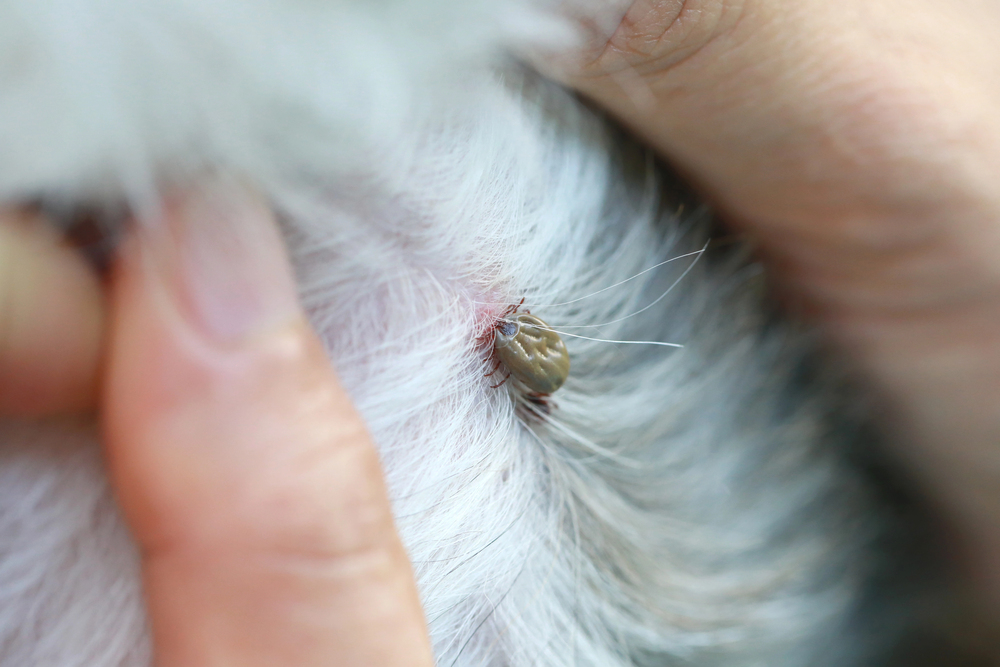
Lyme disease, primarily transmitted through the bite of infected ticks, poses health risks to both pets and humans. Caused by the bacterium *Borrelia burgdorferi*, it predominantly affects dogs, while cats are generally resistant to the bacteria and rarely show signs of the disease. This article provides an in-depth exploration of Lyme disease in dogs, covers its rare occurrence in cats, and addresses key aspects such as symptoms, treatment, prevention, and human transmission risks.
Symptoms of Lyme Disease in Dogs
Lyme disease in dogs can present with various symptoms, including:
- Lameness: Pets may exhibit limping or reluctance to move due to joint inflammation.
- Fever: Persistent fever is a common sign of infection.
- Loss of Appetite: Dogs may show reduced interest in food.
- Lethargy: General weakness or fatigue.
- Swollen Lymph Nodes: Enlarged lymph nodes may be palpable.
Symptoms can vary in severity and may not always be immediately apparent, underscoring the importance of regular veterinary check-ups.
Symptoms of Lyme Disease in Cats
Cats are highly resistant to Lyme disease and typically do not display clinical signs. While infection can occur, it rarely results in illness or symptoms. This innate resistance makes Lyme disease less prevalent and detectable in feline populations compared to dogs.
Diagnosis and Treatment
Diagnosing Lyme disease in dogs involves clinical assessment and confirmatory tests like the C6 antibody test or PCR. Treatment typically includes antibiotics such as doxycycline or amoxicillin to combat the bacterial infection. Supportive care may also be provided to manage symptoms and aid recovery.

Preventing Lyme Disease
Preventive measures are essential to minimize the risk of Lyme disease:
Preventing ticks in dogs is crucial for their health, as ticks can transmit diseases such as Lyme disease, Ehrlichiosis, and Anaplasmosis. Here are some effective ways to prevent ticks on dogs:
- Tick Control Products: Use veterinary-recommended tick control products such as spot-on treatments, tick collars, oral medications, or topical These products can kill ticks on contact or repel them from attaching to your dog.
- Regular Tick Checks: Check your dog daily, especially after walks or outdoor activities, by running your hands over their fur to feel for any bumps (ticks can be as small as a poppy seed). Pay close attention to areas like ears, head, neck, feet, and between toes.
- Maintain a Tick-Free Yard: Keep your yard well-maintained by mowing grass regularly, removing leaf litter and brush, and creating a barrier between wooded areas and your lawn. Consider using environmentally safe tick control products outdoors.
- Avoid Tick-Infested Areas: When possible, avoid walking your dog in tall grass, dense vegetation, or wooded areas where ticks are commonly found.
- Tick Preventive Vaccinations: Some regions offer vaccines against specific tick-borne diseases like Lyme disease. Consult your veterinarian to see if these vaccinations are recommended for your dog.
- Grooming: Regular grooming sessions can help you spot ticks Brushing your dog’s fur can help remove loose ticks before they attach.
- Tick Removal: If you find a tick on your dog, remove it promptly and carefully using fine- tipped tweezers. Grasp the tick as close to your dog’s skin as possible and pull straight out with steady pressure. Clean the area with antiseptic.
- Consult Your Veterinarian: Always consult your veterinarian for the best tick prevention methods and products suitable for your dog, especially if you live in an area where ticks are prevalent or if you notice ticks frequently on your pet.
- By implementing these preventive measures, you can help protect your dog from tick bites and the potential diseases they can transmit.
Human Risks and Transmission
Ticks infected with *Borrelia burgdorferi* can transmit Lyme disease to humans through bites. Early symptoms in humans may include a distinctive bull’s-eye rash, fever, headache, and joint pain. Seeking medical attention promptly is crucial to prevent complications, as untreated Lyme disease can affect the heart, nervous system, and joints.
Frequently Asked Questions about Lyme Disease
Q: Can cats get Lyme disease?
A: Cats are highly resistant to the bacteria causing Lyme disease and rarely show signs of the disease.
Q: What should I do if I find a tick on my pet?
A: Safely remove the tick using fine-tipped tweezers, grasp it close to the skin, and pull straight out. Monitor your pet for any signs of illness and consult your veterinarian if concerned.
Q: Can my dog spread Lyme disease to other pets or humans?
A: No, Lyme disease is not directly transmissible from pets to humans or other pets. It requires a tick bite for transmission.
Q: How effective is the Lyme disease vaccine for dogs?
A: The Lyme disease vaccine for dogs is generally effective but may not provide complete protection in all cases. Consult with your veterinarian to determine if vaccination is appropriate for your pet based on their lifestyle and risk factors.
Q: Should indoor cats also be protected from ticks?
A: While indoor cats have a lower risk of tick exposure, ticks can still enter homes on clothing or other pets. Discuss preventive options with your veterinarian to ensure comprehensive protection.
Conclusion
Understanding Lyme disease, its symptoms, prevention strategies, and risks to both pets and humans is crucial for responsible pet ownership. By implementing preventive measures and seeking veterinary care promptly, pet owners can help safeguard their beloved companions and themselves from the impact of Lyme disease. For personalized advice on vaccination schedules and tick prevention methods, always consult your veterinarian. Stay informed and proactive to ensure the well-being of your pets and promote a healthy environment for all.
